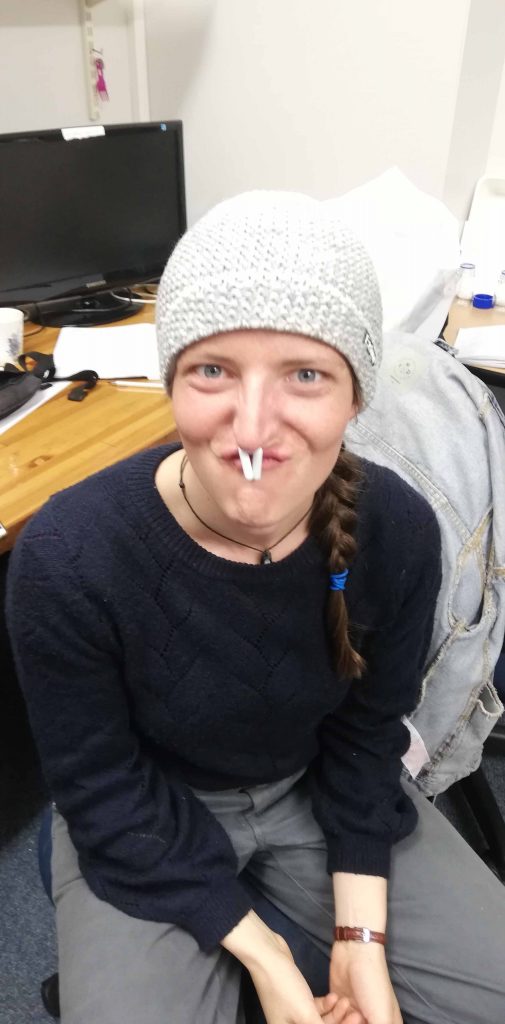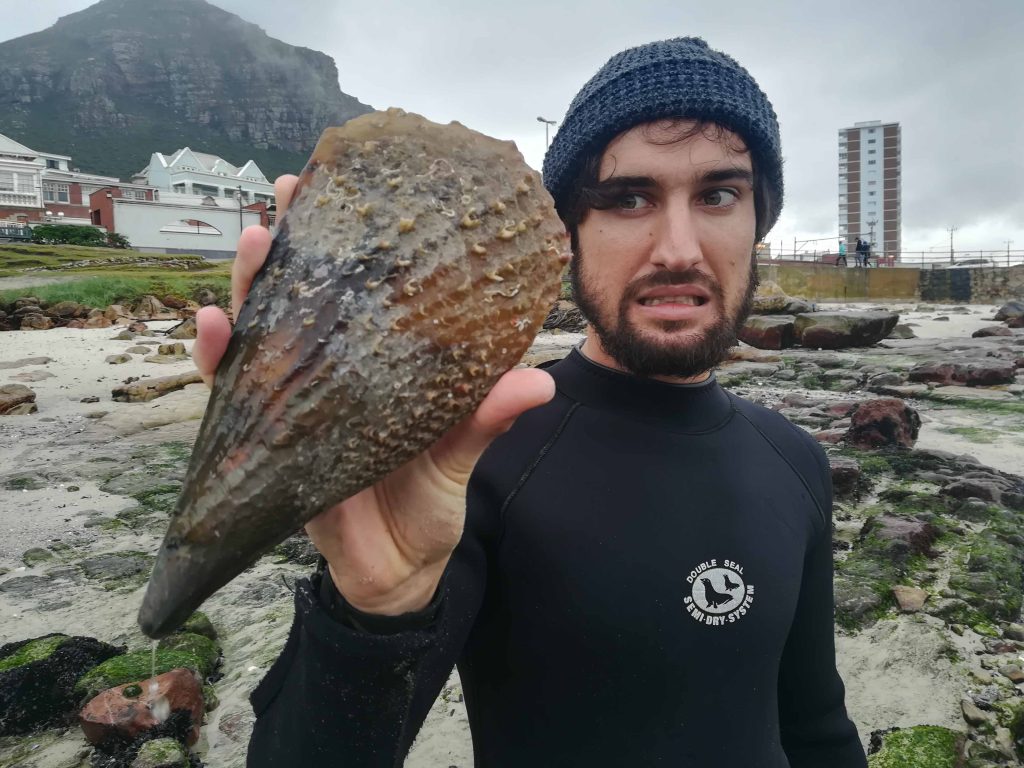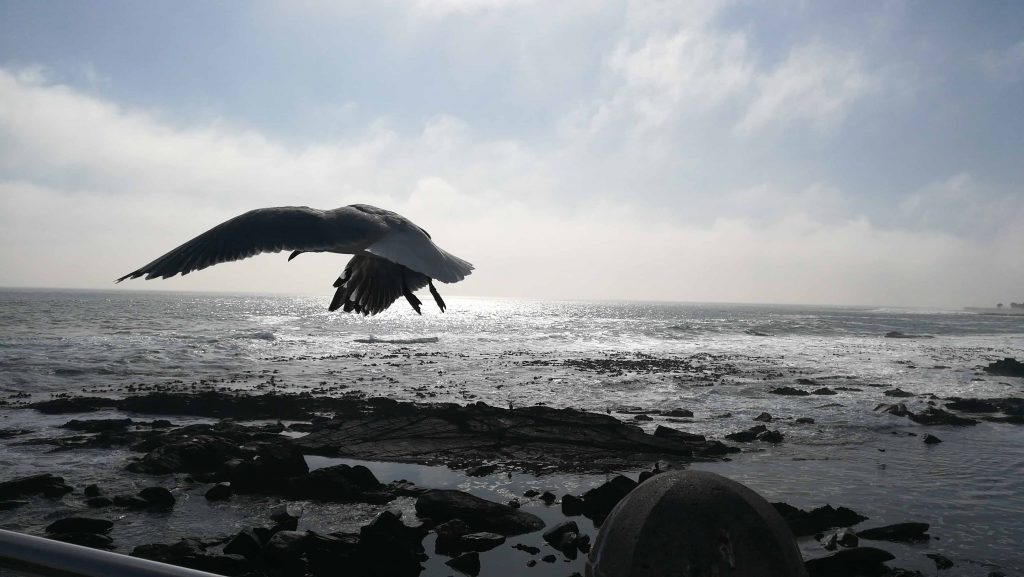“Wyneberg, Wyneberg” – a hooting Minibus taxi is racing past us on the way to the upper campus of the University of Cape Town (UCT), a man hangs half out the front-passengers window, smiling and whistling at us. Us being Matthew and Silja, Team South Africa, in short: Team SA, ready to revive the GAME project in South Africa after a prolonged hiatus. Matthew is 22 and from Pietermaritzburg, a city at the east coast of South Africa, while Silja is 26 (old and wise for sure, even though Matthew would leave it at just old) and from Kiel, the “real” north of Germany. Together we have experienced all sorts of smaller and bigger issues, which naturally appear when running a scientific project. But we have also spent time enjoying the great natural beauty of South Africa together and went through the many hectic surfing-bailouts one experiences before being able to stand on a surf board. By the way, to let you feel a bit of the South African spirit when reading through this, we are going to introduce you to at least a small portion of the “South African lingo”. First lesson: Hectic. Hectic is a word you definitely need to remember when you ever plan to travel to South Africa and specifically Cape Town. It can be used in almost every situation, with positive as well as negative connotations and therefore is the allrounder of the words you will learn, when reading through our blog. But there are more of these essential phrases, which we will introduce you to, so stay tuned and enjoy the journey of our experiences in GAME 2019, which we are going to share with you in the following.
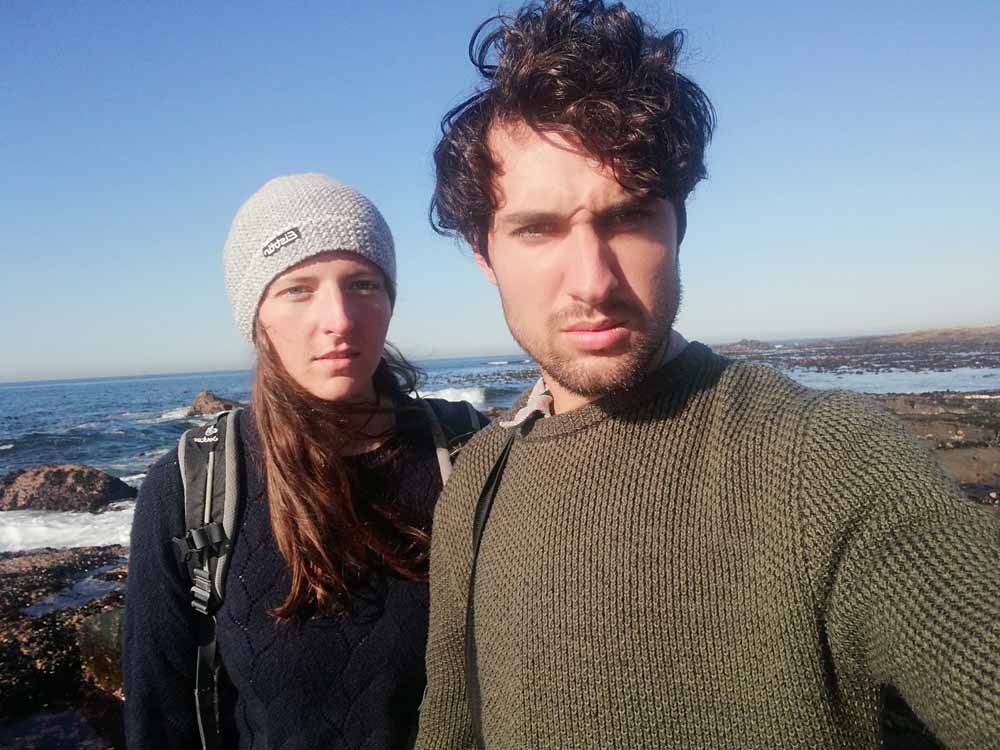


In short: Our experimental approach
When we get asked what the topic of our experiment is, one of the very first and summarising answers we gave is “mussels and microplastics”. And if you have already read a few of the previous blog articles you might already have an idea of what this year’s GAME project is about. If not, here is a short overview: This year’s project will assess and compare the effects caused by microplastics and natural particles on filter feeders, mainly mussels belonging to the family Mytilidae. Previous studies have just looked at the effects of microplastics, without incorporating an experimental group of mussels that were exposed to natural particles. This year’s GAME project aims to change this by conducting the same experiment across the globe. The information gained from the project will hopefully help to disentangle the effects of particle type from the effects of particle loads.
The Cape peninsula is especially prone to invasion by alien species and shows a high abundance of non-native animals appearing on land and in the ocean. One of them is the Mediterranean mussel Mytilus galloprovincialis, which got introduced in 1979 to the Cape peninsula and from then appeared in growing quantities. Now it covers huge areas in the upper intertidal and this leads to an up-shore extension of mussel beds. Talking to Charles Griffiths, one of our South African supervisors about this development led us to the decision, to work with two different mussel species to compare the effects of particles on the condition of an alien and a native species. Therefore, besides M. galloprovincialis, we worked with the native black mussel Choromytilus meridionalis, which mainly appears in the lower intertidal and hence inhabits a different part of the intertidal habitat than Mytilus galloprovinciales. And to give you at least a very first glimpse into the general trend of our data: The individuals of the native C. meridionalis seem to be strong little creatures compared to the invasive species, which generally doesn’t seem to like our lab and shows high levels of mortality. We are currently investigating, if this could be explained by the levels of affection shown by us towards the animals. Silja definitely expressed her feelings of love towards her species more than Matthew did and gave the affectionate name “Choro” to her mussels, while the name given by Matthew to his mussels would be inappropriate in this context. We’ll assess in the statistics course in October, if this really is a major cause.

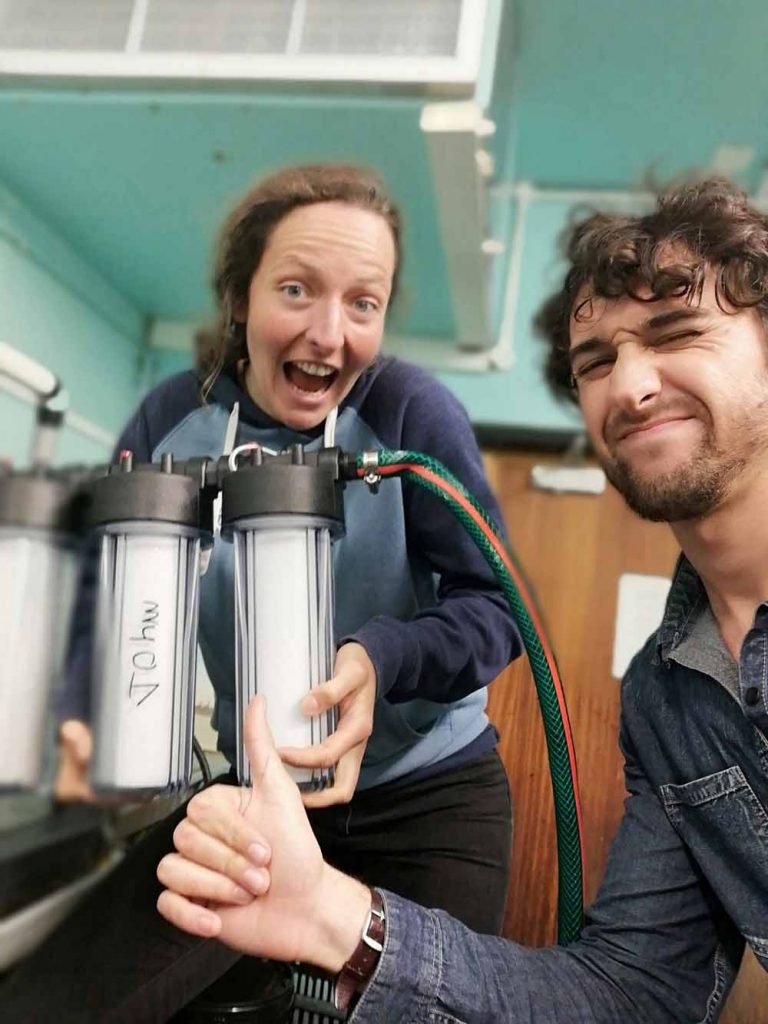
Not without our team
Working in Africa is different from working in Europe. Things are usually taking much longer than what Silja is used to from home and Friday often can’t be called a full day of working. “I’ll do it just now” – a sentence you will hear quite often in South Africa and which can be translated to “It will be done within the next week. If you’re lucky”. Luckily, we are surrounded by a team to which this translation doesn’t apply. This is a very important fact considering that we only had 6 months to set-up the whole experiment, run it and finish our data collection. Our home-base is the University of Cape Town (UCT), where we are supervised by one of the best known marine biologists of South Africa, Prof. Charles Griffiths, and Dr. Maya Pfaff, who has accomplished one of the very first GAME projects. She is now representing the South African part of the team and is involved in exciting research for the Department of Environmental Affairs in Cape Town. That makes her pivotal in the supervision of the GAME project in South Africa. Our experiment is set-up indoors in a so-called climate chamber, which means that we can control the temperature and the day-night cycle that our experimental specimens will be exposed to. Furthermore, we have pressured air and seawater on tap – at least in theory. In practice, we experienced almost every imaginable issue ranging from broken chillers, which led to 21 degrees in our 14-degree-climate chamber, and to burst pipes of the main air supply, what means no aeration for the whole set-up. What both of us have learned when dealing whit these incidents is to keep calm and call Calvan. Together with Andrea, the second technician and multi-talent of the biology department, he can solve almost every possible emergency occurring in the climate chambers. They helped us out numerous times and where available at almost every time of the day – an essential part of our team without which we wouldn’t have been able to accomplish this experiment.

Silja’s time in Cape Town
Africa, that means elephants, lions and rhinos roaming wildly and freely through the Savannah. I guess that’s what most people seem to imagine, when I tell them that I’m currently in South Africa. As we are located in Cape Town, there is a lack of “big five” animals in the close surroundings, but that by far doesn’t mean, that the wildlife here is less spectacular. Wildlife as well as the general biodiversity is incredibly high compared to Germany. Every boulder we turned at the beach seems to be covered with limpets, mussels, isopods and algae, while kelp is swinging in the swell of deeper waters and a gully shark is roaming between its stalks. Along with this spectacular nature are, of course, the various outdoor activities: For me that meant sitting in the backline of the Atlantic Ocean waiting for a good set of waves coming through, while a whale was breaching and waving its flippers only 500 m from us, as well as diving in the kelp forests and hiking up the rocky mountains of the Cape peninsula. As a marine biologist and (water) sports enthusiast here is probably one of the greatest places to be as the variety of activities as well as the variety of nature is incredibly high caused by the unique topography of the Cape peninsula.
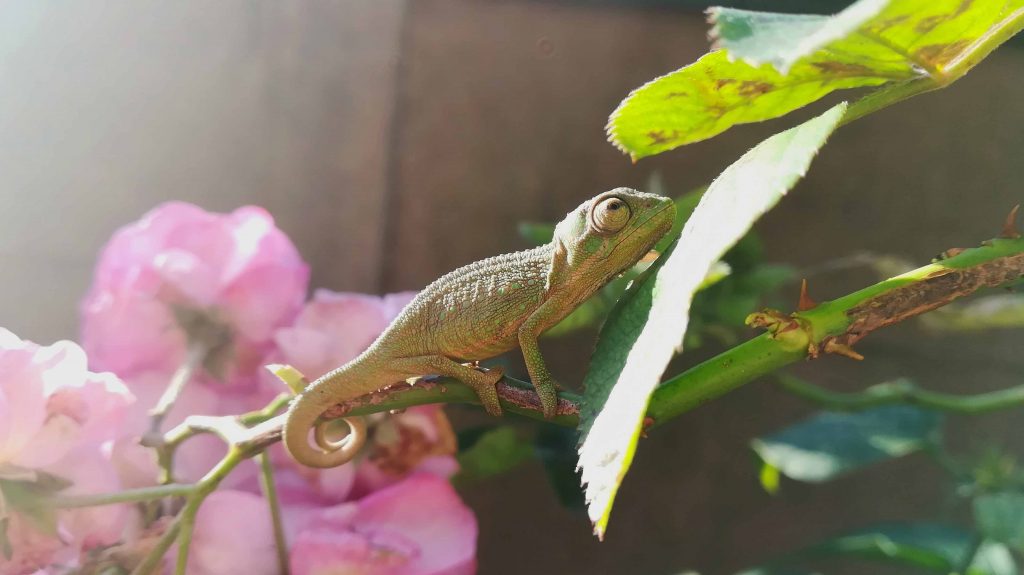
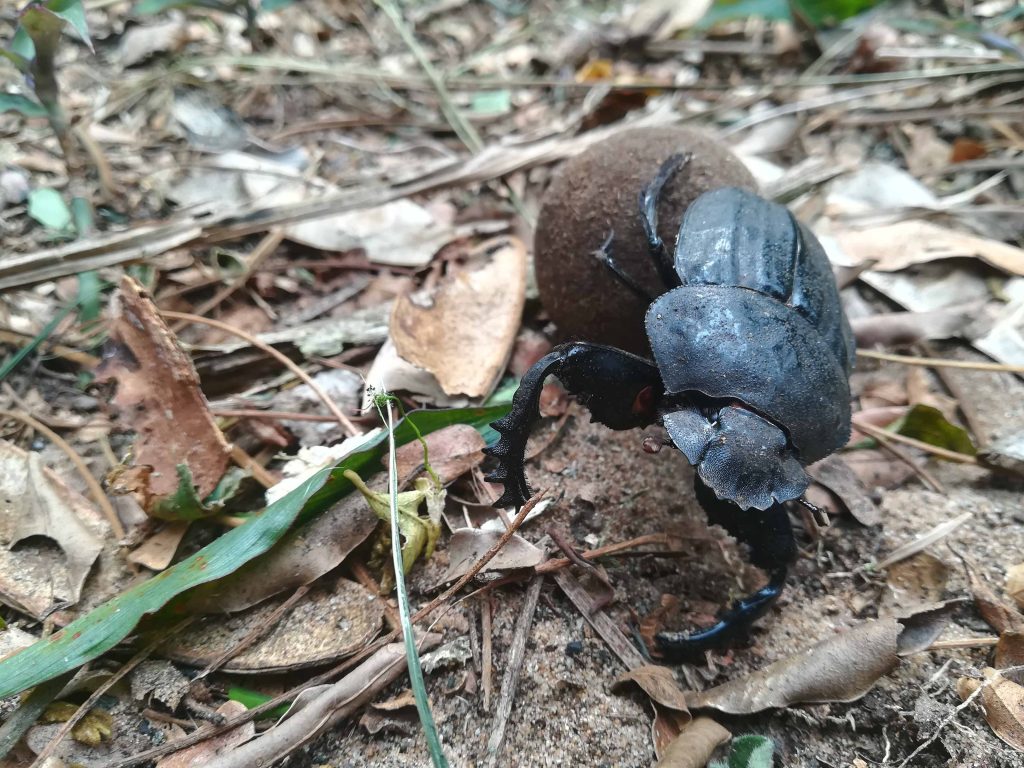
When we haven’t been busy working on our experiment or spending time in and around the ocean, I tried to experience the variety of a city like Cape Town. We went out to wonderful nights of pool playing in a placed called “Stones” which has an atmosphere of chaotic charm, had the best frozen Margarita in the “Fat cactus” and went dancing in a small club, far away from the famous Long street in the inner city. I’ve visited small street markets, where people from various African countries sold goods, had traditional Senegalese coffee and ate Ethiopian Injera, which is a special and very delicious sourdough bread made of ancient grain. And, of course, I had lots of braai’s, the Afrikaans way of saying “barbeque and sit together”, with all of the welcoming people I have met here at the other end of the world. Besides food, I have also always been keen – another very South African word – to get introduced to (South) African music, which seems to be as diverse as the country itself. A lot of different music styles have accompanied our work in lab and office and therefore my stay here in South Africa. The variety covered Jack Parow, singing in Afrikaans about the Tokolosh, a dwarf-like creature which is associated with nightmares, better known artists as Jeremy Loops and Timo Odv as welln as the very unknown singer Mangaliso, which means miracle in Xhosa that isone of the eleven official languages of South Africa.
If you’ve read so far, you will for sure have noticed that I am absolutely in love with South Africa and the experience I made here, which is mainly rewarded to the awesome people I have met and the great experiences I made. Nonetheless, there also is a part of South Africa, which isn’t all bright and glowing and even though it is not an easy topic it feels wrong for me to cut it entirely out of our blog. As you know by now, South Africa is very diverse in almost every regard and, unfortunately, that also applies to the society of the country. A large proportion of South Africa’s population is living in townships, often without regular water supply and the amount of crime and infectious diseases is higher than in many other countries. The gap between the very rich and the very poor is striking and one must be aware of the fact, that the society is still struggling to get rid of relicts from the era of apartheid.
South Africa was a great adventure for me and I am sure, I will never forget the lovely nights under the stars of the southern hemisphere I’ve spend when camping in the mountains and on the beach. All the waves I’ve caught and the dives I’ve taken, the lovely friends I made and of course the great scientific experience I gained by running our experiment and solving all the smaller and bigger difficulties appearing with it.
Matthew’s Time in Kiel
As part of the GAME project, all participants met in Kiel for the month of March where we all attended lectures and practicals on experimental design, biostatistics, and concepts in ecology. After months of sweltering subtropical heat on the east coast of South Africa, my arrival in Kiel came as quite a shock. I stepped off the bus that transferred me from Hamburg International Airport wearing just a light cotton shirt with instant regret. The air temperature was around 3°C with a biting wind and drizzle so that, by the time the GAME coordinator Dr. Mark Lenz and Silja came around to pick me up, I was a shivering mess. I was cold and delirious from travel, but ready to take on my new life in Kiel.
My time in Kiel was incredibly valuable. We all learnt a huge amount about conducting experiments, and most importantly for me, to work in a large group. Apart from the rigorous lectures on statistics, ecology and experimental science, most of the sessions at GEOMAR took the form of informal discussions where we debated ideas and made decisions about all aspects of the experiment within the group of students whilst being supervised by Mark Lenz. Cooperation in this regard was incredibly important as we wanted to make the results obtained in each experiment as comparable as possible. These discussions for me were very thought-provoking and valuable as we all had to stretch our minds and consider aspects of various fields to optimize our experimental design. The discussions got rather heated at times and often went on for hours, but looking back from our current position, I feel they were very important. I thoroughly enjoyed the social aspect of the experience. All the participants came from different locations and different backgrounds and it was very interesting getting to know one another. I noticed there was a certain comfort that people felt when discussing how things differed in their home countries and these conversations were very enlightening. All the members of the GAME project were very friendly and warm, making the time in Kiel especially enjoyable.
Spending an extended period of time in a foreign country always comes with its culture shocks. South Africa generally has a more relaxed attitude to life in general. Being on time, for example, isn’t a priority. And robots (traffic lights in “South African lingo”) are most often only suggestions. I was amazed that even at 2 o-clock in the morning pedestrians still wait for the little man to turn green before crossing the street, even when there isn’t the slightest hum of a vehicle anywhere. Simple things like going to the grocery store becomes a task demanding concentration and a fair amount of stress. My first time in a German grocery store gave me a semi-permanent stress response to all subsequent shopping experiences. Finding the food was no problem. I stood in the queue in a happy daze, satisfied with what I were about to buy. As I got to the carousal, suddenly I saw people unpacking their food in a great hurry on to the moving platform, and quickly adding a red barrier to separate their food from the rest. The speed and urgency of the situation caught me completely off guard causing me to dump my items in a very disorganized way, then searching frantically for a divider. Finally, everything was on. I breathed deeply. Then as I approached the cashier, something dawned on me. There were no plastic bags anywhere to be seen, and everyone had their own. I got to the cashier, she processed all my items and told me the cost after which I paid with my card. I asked if she had a bag. She shook her head. I stared at the pile of groceries in front of me, then at the queue of angry eyes behind me. In South Africa we have someone employed for the task of bagging the groceries. I asked where we could get bags from. She was already attending to the next customer and the number of groceries on the table was accumulating very quickly. I was beginning to panic. But suddenly a voice called out from the queue and someone handed me a bag. I have never been more grateful in my life.
One thing that I really appreciated about my time in Kiel was how receptive everyone was to our research project. We had an amazingly warm welcoming by the city, including the city’s president, Hans-Werner Tovar. We also had various interviews and news appearances for our project, giving an air of importance to our project. These encounters also gave the GAME group valuable experience in dealing with media and communicating their research.
The cursed response variables
We write this from a small room crammed with a 15 million Rand worth of flow cytometry equipment on the Medical campus of the University of Cape Town. Staring at the whirring little robotic arm extracting small amounts of fluid from our samples before sucking it up into the bowels of a vast machine, which, inside houses an intricate network of precisely aligned lasers, we wonder to ourselves, how on earth did we get here?
It was about two months into the preparation phase of our experiment and we almost had all the equipment required to measure the response variables we were interested including: mass, length, respiration rate, byssus number, byssus strength and filtration rate. The variable which gave us the most trouble was the filtration rate. Mussels are filter feeding bivalves, drawing water through an inhalant siphon, filtering the water for organic particles with their gills, and expelling it through the exhalent siphon. One way to measure the rate at which they filter is to allow mussels to feed on algae for a fixed amount of time and to subtract the final concentration of algae from the initial. Counting algae cells in a fixed volume of water, considering all the major scientific accomplishments achieved in the 21st century, may seem like a trivial task, but it is not. We started with most widely used method for cell counting, which is the use of a haemocytometer, specifically the Neubauer Improved chamber. This method involves counting the number of cells in a known small volume of water, and extrapolating it to a larger volume. The first trial run before the main experiment yielded some promising results, with all the mussels showing filtration. This, however, was going to be the last promising result we would have for this variable for the next few months. The next few attempts with the Neubauer chamber revealed very erratic counts, though the mussels were open and, hence, were assumed to filter. We were flummoxed. A ray of hope was a contact, which our supervisor Maya had from the very beginning: A Coulter Counter that is operated by an independent research institute in Cape Town. After a lot of calls and contacting attempts, we got hold of some information according to which all we had to do was to lug this 80 kilogram piece of equipment, worth hundreds of thousands, from the inner city to the institute near UCT. We arrived at the storage, finding that no one knew where this device was, and that the keys to the facilities had been lost. Eventually the keys were found and to our amazement the Coulter counter was found sitting on a dusty shelf with no outer casing. It seemed to work well at first, but you better don’t get too excited now (we did though). To shorten the following episode a bit: We experienced several motherboard issues in computers, trying to run the device in an abandoned lab, but after a few sparks (literal ones as well as sparks of hope) we’ve been back on square one. After this defeat, we considered attempting the use of a Fuchs-Rosenthal counting chamber that has a larger volume and hence allows one to count more accurately. We ordered the chambers from Germany, and after a two-week battle with South African customs, we finally got hold of them; our saving grace, or so we thought. Well, it turned out we couldn’t see the counting grids with the microscopes available, we needed a phase contrast microscope to see the light-lined grid. By this point, we were feeling flummoxed and a bit forlorn. After exploring a few other options, including various high tech-microscopes and FlowCam technology, we decided to turn back to a contact we acquired early on in our search. We had inquired about the use of flow cytometry on the medical campus of the University of Cape Town, and after we struck a deal with them, we tested out our samples and learned the technique. And finally, we were up and running. That’s how we got in this small room on the medical campus. It is a long and exhausting story, both to live through and to tell, but we learnt a lot along the way.

A quick excursion into South Africa’s marine ecology
To give you an idea of which kind of ecosystem our mussel species were coming from, we want to provide at least a small overview of how the oceans around the Cape region and their marine life look like: There are two main drivers that shape marine life in South Africa. The east coast is influenced by the warm, fast moving Agulhas current. Water temperatures are typically around 26°C making it a subtropical ecosystem with coral reefs in parts of the KwaZulu Natal coast. This area has high levels of biodiversity, but generally a low productivity, which, in turn, supports a low biomass.
On the west coast of the country, an upwelling system, called the Benguela Upwelling System, brings very nutrient rich waters to the surface, hence resulting in a system dominated by a high standing biomass and high levels of organic production, but a low species diversity. Sea surface temperatures are typically around 10-14 °C, which for its latitude is pretty chilly. This very productive part of the South African coast stretches from the south western parts, all the way to northern Namibia and supports large numbers of marine life forms, with huge colonies of birds breeding along the coast, and great numbers of marine mammals, fish and invertebrates. These contrasting ecosystems render South Africa as an interesting place to live in and study marine biology.
Very well known, especially for their great taste, are the two most commonly eaten fish species Hake (Merluccius carpensis and M. paradoxus) and Snoek (Thyrsites atun), which both are caught in the cold water system around the Cape region and up the west coast. And this is also where we collected the mussels for our experiments, as we were stationed in Cape Town.
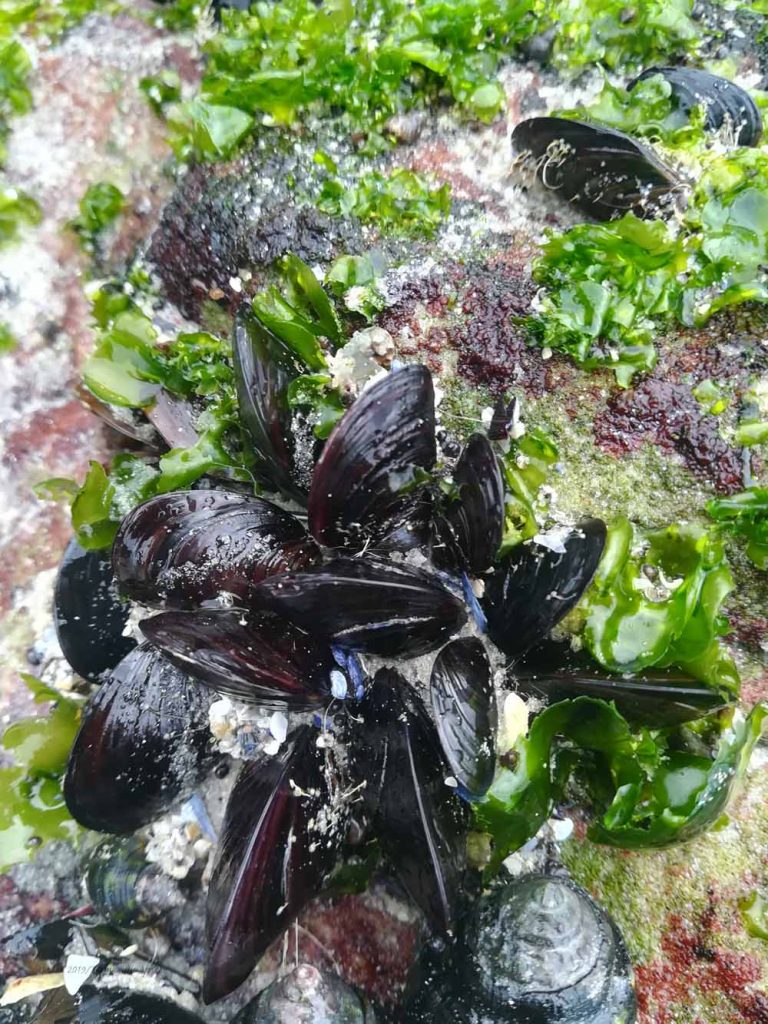
Looking back on 6 months of experimental work
While we are writing this blog, our experiment is about to be finished (yah, we are a bit late with our blog) and have the chance to look back on 6 months of intensive research, our close collaboration with each other as well as various different research institutions and working groups. Of course, we know now, due to the experiences we’ve gained during this time, what should have been changed to make the project even more successful. After doing an experiment like this, flaws and (hopefully only smaller) mistakes become clearly visible, but that’s by far not everything. Gladly, we also know what went well. We got knowledge about our boundaries of stress management and workload and we definitely learned how to solve spontaneously arising problems. GAME could be described as the miniature version of a PhD project, which you luckily face together with a partner – the fact of not being alone with all these new challenges made this experience absolutely special to us, as the concept teaches not only scientific but also social skills. We’ve been especially lucky, as our match was working incredibly well: We often completed each other, had the same idea of how to do things and never got into serious conflicts, while always being able to discuss different opinions and ideas in a friendly and constructive way – we cross our fingers for all the coming GAME students, to get a match as well working as ours. Now, we are looking forward to meeting all the other students of our program in Kiel, to get a deeper insight into our data and figure out the statistics. Because, believe it or not, after 6 months during which we spent approximately 12 hours per day rushing around our department, lifting the crates with our experimental units or measuring one of our response variables, we are quite happy to interrupt our workout-routine and sit a bit in front of computers, trying to get R (a statistical software environment) to behave. We hope that we gave you an insight into what GAME might be like and have aroused your interest for this special research programme as well as South Africa as a destination. Now we need to quickly head to Muizenberg and catch our last surf before it’s going back to Germany.
Cheers from Cape Town
